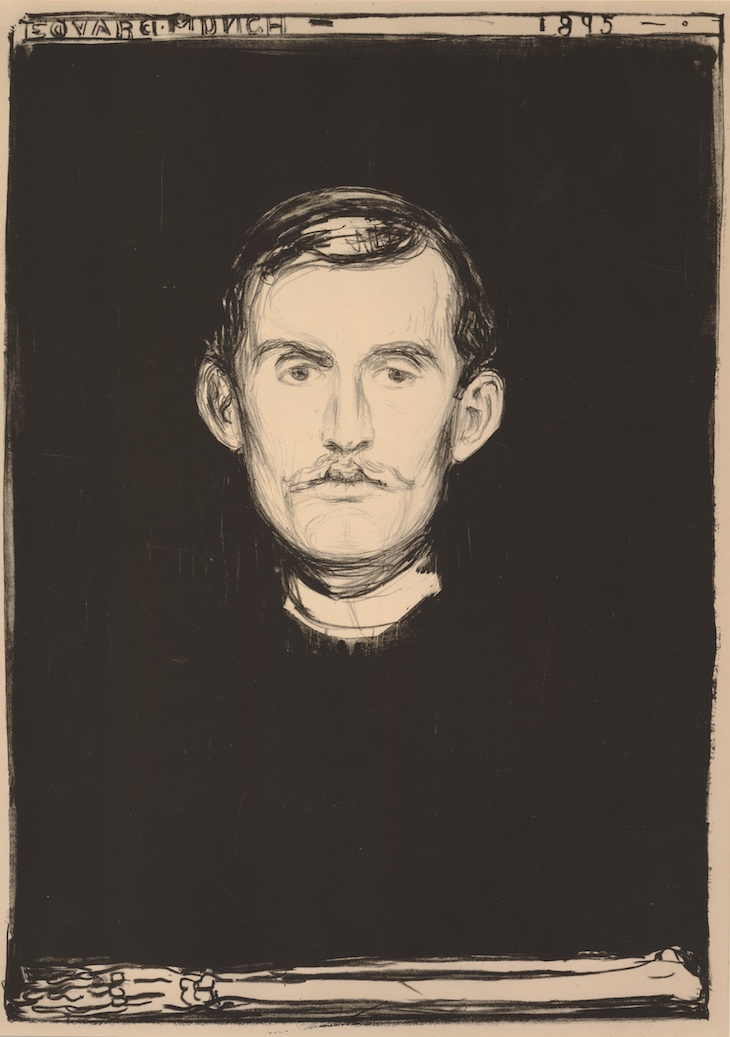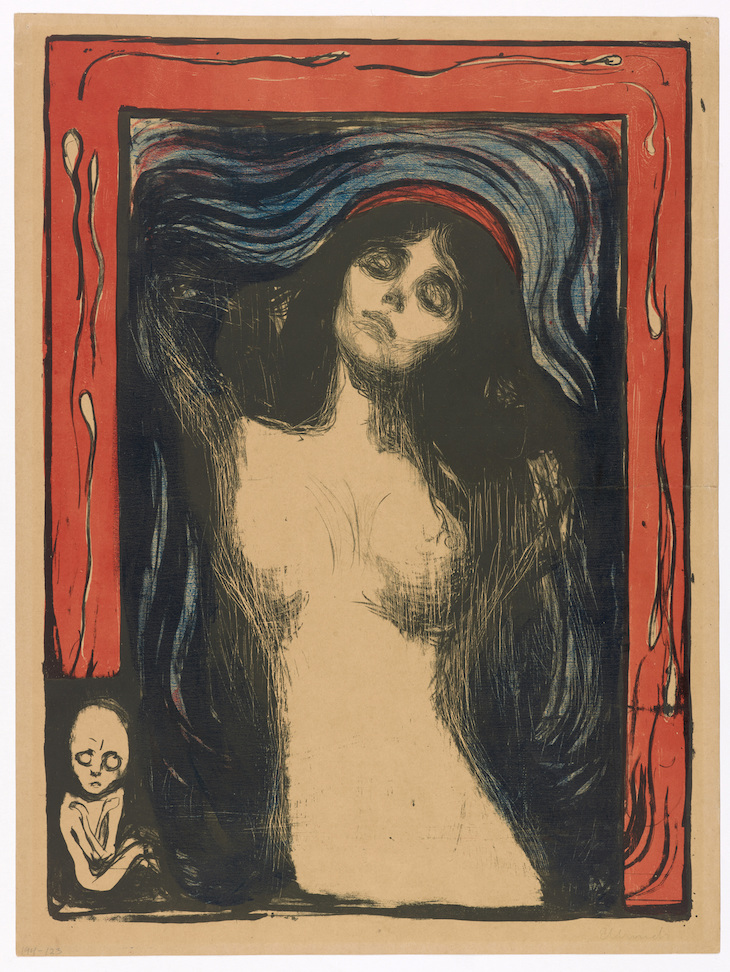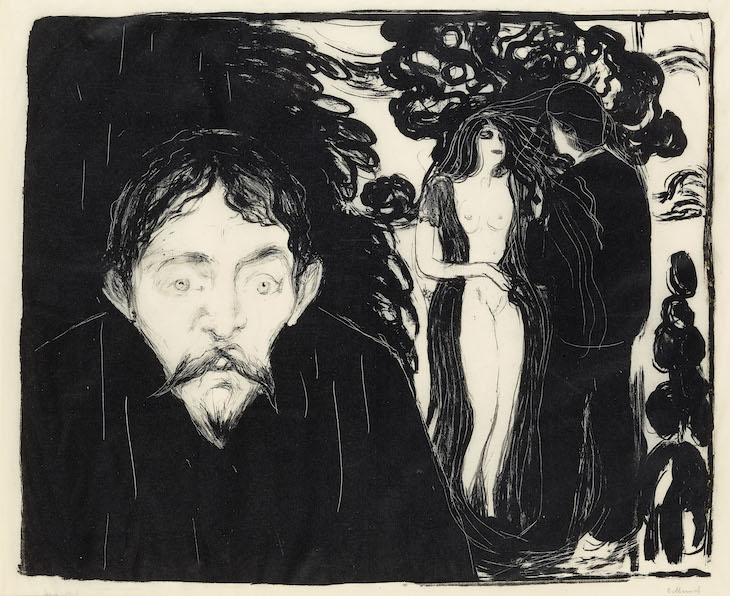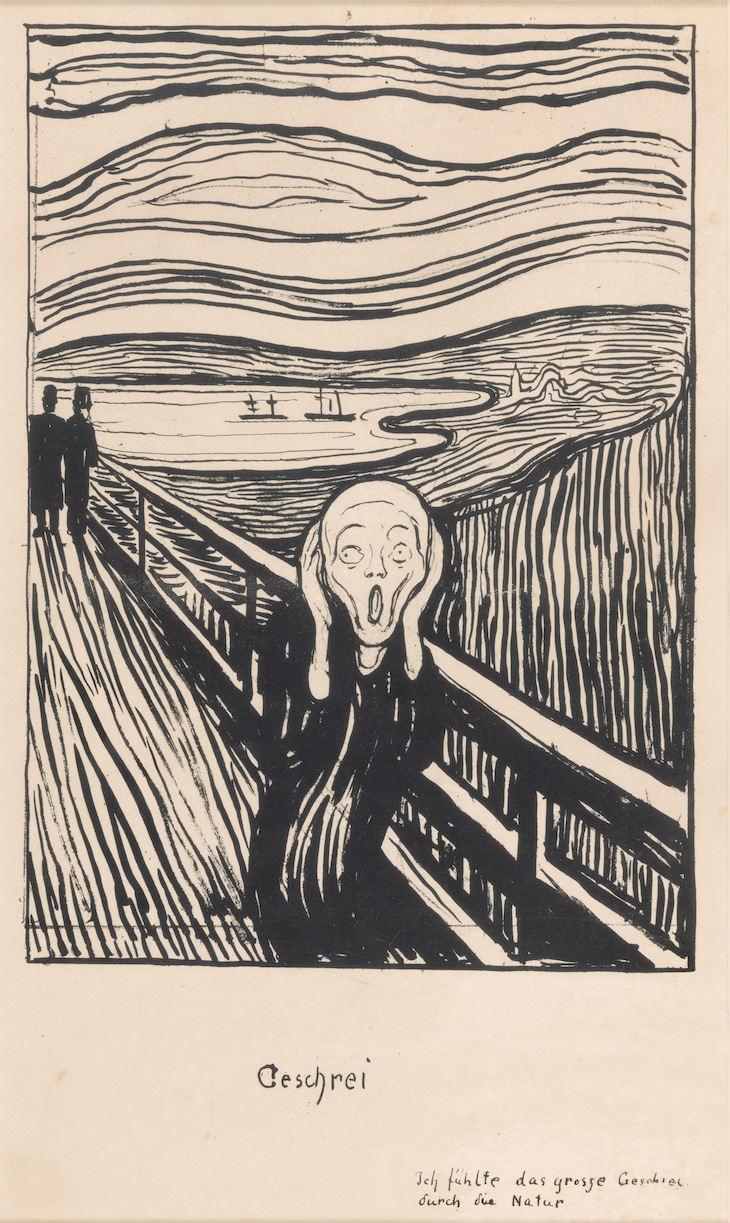This exhibition of more than 80 prints looks beyond The Scream to explore how the Norwegian artist’s expressions of desire, anxiety and grief were inspired by his constant travels across Europe, as well as by his reading of thinkers such as Nietzsche and Ibsen. Find out more from the British Museum’s website.
Preview the exhibition below | View Apollo’s Art Diary here

Self Portrait (1895), Edvard Munch. © The Trustees of the British Museum
Munch began experimenting with black-and-white lithography, which would become his favoured graphic medium, in 1894–95 while living in Berlin; this haunting self-portrait is one of his earliest works in the medium. The skeletal arm that frames the composition at the bottom, operating as a memento mori, eerily foreshadows a traumatic incident of 1902, in which Munch was shot in his left hand during an argument with an ex-lover.

Madonna (1895/1902), Edvard Munch. Munchmuseet, Oslo
A well-known motif in his work, Munch’s Madonna forms a part of his Frieze of Life series of paintings, which charts the successive psychological experiences of love, angst and grief. This print is distinguished from the painting of the same name by its incorporation of a Symbolist border, decorated with writhing sperm and a foetus in the corner.

Jealousy II (1896), Edvard Munch.
The painting on which this lithograph is based, Jealousy, is also included in the Frieze of Life cycle. The print depicts the artist’s friend, the Polish novelist Stanislaw Przybyszewski, wracked by anxiety in the foreground while his wife Dagny Juel – who modelled for Madonna – cavorts with Munch behind his back.

The Scream (1895), Edvard Munch. Photo: Thomas Widerberg
Munch painted his most recognisable image in 1893, after a nervous episode during a walk in Kristiania (now Oslo) during which he described feeling ‘a great, infinite scream through nature’. The lithographic version was first printed in Berlin in 1895, and subsequently reproduced in the Parisian Revue Blanche.











![Masterpiece [Re]discovery 2022. Photo: Ben Fisher Photography, courtesy of Masterpiece London](http://www.apollo-magazine.com/wp-content/uploads/2022/07/MPL2022_4263.jpg)
It’s time for the government of London to return to its rightful home